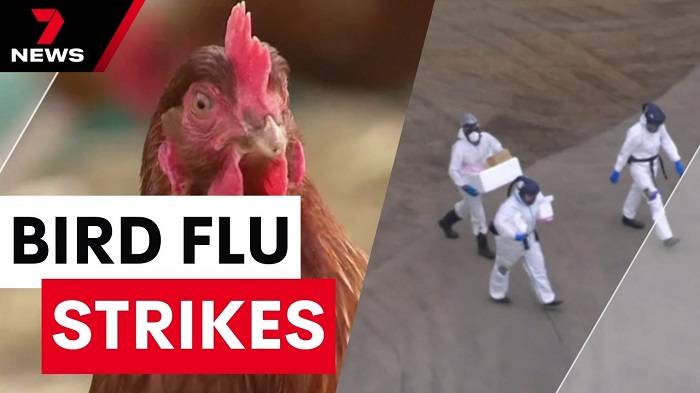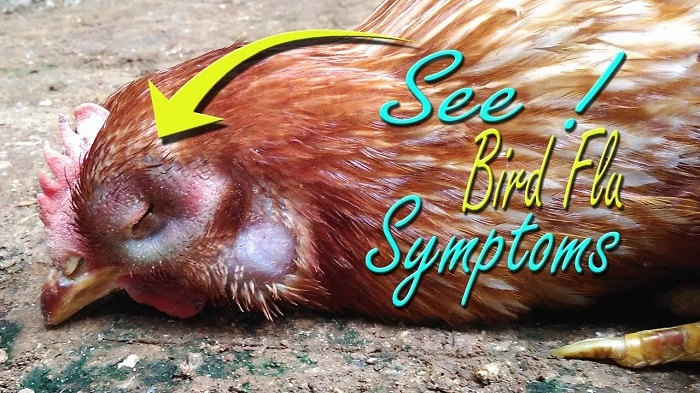Bird flu, also known as avian influenza, is a highly contagious viral disease that affects both wild and domestic birds. Caused by influenza type A viruses, bird flu can spread rapidly and lead to severe illness or sudden death in infected flocks. Understanding the signs of bird flu in birds is critical for bird owners, farmers, and wildlife watchers alike — not only to protect birds, but also to reduce the risk of transmission to humans or other animals.
In this guide, we’ll explain the most common symptoms of bird flu in birds, how it spreads, and what steps to take if you suspect an infection.
What Is Bird Flu?
Bird flu is caused by avian influenza viruses, specifically H5 and H7 subtypes. These viruses are divided into two categories based on their severity:
- Highly Pathogenic Avian Influenza (HPAI): Causes severe illness and death in birds, often within 48 hours.
- Low Pathogenic Avian Influenza (LPAI): Typically results in milder symptoms but can still spread and mutate.
While many wild waterfowl can carry bird flu without symptoms, domesticated poultry like chickens, turkeys, and ducks are especially vulnerable to outbreaks.
General Signs of Bird Flu in Birds
Bird flu symptoms can vary depending on the virus strain and the species of bird affected. However, some general signs are commonly observed in infected birds.
Respiratory Symptoms
- Coughing or sneezing
- Labored or open-mouth breathing
- Nasal discharge or runny nose
- Swelling around the eyes, head, or neck
- Gurgling or wheezing sounds
Digestive and Physical Changes
- Loss of appetite
- Diarrhea or watery droppings
- Sudden drop in egg production
- Soft-shelled or misshapen eggs
Behavioral Changes
- Lethargy or weakness
- Reluctance to move or fly
- Huddling or drooping posture
- Unusual isolation from the group
- Lack of vocalization in typically noisy species
Neurological Signs (in severe cases)
- Tremors or shaking
- Head tilting
- Loss of coordination
- Paralysis or inability to stand or walk
Sudden Death
- In cases of HPAI, birds may die suddenly without showing any previous signs of illness.
- Large numbers of birds dying within a short period is a major red flag.
Signs of Bird Flu in Chickens and Backyard Poultry
Backyard poultry keepers should be especially alert. Signs of bird flu in chickens and other domestic birds include:
- Blue or discolored combs and wattles
- Swollen head, eyelids, and legs
- Ruffled feathers and hunched appearance
- Quiet, withdrawn behavior
- Complete stop in egg laying
If you notice multiple birds sick or dead at once, this could indicate a serious outbreak and should be reported immediately to animal health authorities.
Signs of Bird Flu in Wild Birds
Wild birds — especially ducks, geese, swans, gulls, and shorebirds — can carry avian flu without looking sick. However, signs can still appear in some species, especially if they are heavily affected.
Look for:
- Unusual behavior (flying poorly, falling over, appearing dazed)
- Difficulty walking or flying
- Visible nasal discharge or labored breathing
- Lying down or unable to escape predators or humans
- Dead birds in clusters or in large numbers
Avoid touching or approaching sick or dead wild birds, and report them to your local wildlife agency or department of agriculture.
How Bird Flu Spreads
Bird flu spreads primarily through:
- Contact with infected droppings, secretions, or surfaces
- Contaminated feed, water, or equipment
- Airborne particles in enclosed environments
- Migrating wild birds introducing the virus to domestic flocks
Even people can unknowingly spread the virus on clothing, shoes, or hands if they’ve been near infected birds or contaminated areas.
Prevention Tips for Bird Owners
If you raise chickens, ducks, or other birds, follow strict biosecurity measures to prevent bird flu:
- Keep wild birds away from poultry areas using netting or fencing
- Clean shoes, tools, and hands before and after entering coops
- Limit visitors and avoid sharing equipment with other bird keepers
- Quarantine new birds before introducing them to your flock
- Avoid feeding wild birds near domestic birds
Always watch for sudden illness or unusual behavior in your flock, and contact a vet if symptoms arise.
What To Do If You Suspect Bird Flu
If you think one of your birds might have bird flu:
- Isolate the sick bird immediately from the rest of the flock
- Do not handle dead birds with bare hands
- Contact your veterinarian or local agriculture department for guidance
- Report multiple deaths or unusual wild bird behavior to authorities
Prompt action can help prevent the spread of bird flu to other birds, farms, or even species.
Is Bird Flu Dangerous to Humans?
While most strains of bird flu do not infect humans, certain highly pathogenic subtypes like H5N1 have been known to cause rare but serious illness in people, especially those who work closely with birds.
Human transmission typically occurs through:
- Direct contact with infected birds or droppings
- Handling contaminated equipment or surfaces
- Inhalation of airborne virus particles in high-risk environments
Wearing protective gear and practicing hygiene when working with birds significantly reduces the risk.
FAQs
What are the first signs of bird flu in birds?
Lethargy, respiratory issues like coughing or nasal discharge, and a sudden drop in activity or egg production are early signs.
Can bird flu kill birds quickly?
Yes, highly pathogenic strains can cause death within 24 to 48 hours without visible symptoms.
Is bird flu contagious between birds?
Very. It spreads quickly through droppings, saliva, and contaminated surfaces or equipment.
Should I report dead wild birds?
Yes, especially if multiple dead birds are found together. Report to your local wildlife agency or agricultural office.
Can humans get sick from bird flu?
It’s rare but possible. Avoid direct contact with sick or dead birds and always follow hygiene protocols.




